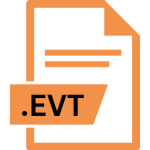.BUD File Extension

Binary Printer Description File
| Developer | Microsoft |
| Popularity | |
| Category | System Files |
| Format | .BUD |
| Cross Platform | Update Soon |
What is an BUD file?
The .BUD file extension is associated with Binary Printer Description Files. These files serve a crucial role in defining the characteristics and capabilities of printers, allowing software to communicate with different types of printers effectively.
By detailing the printer’s specifications, such as resolution, page size, and available features, .BUD files ensure that print jobs are handled accurately, preserving the intended output quality and format.
More Information.
The .BUD file extension was introduced in the late 1980s and early 1990s as part of a broader trend to enhance printer management and integration.
The primary purpose of the .BUD file was to facilitate communication between software applications and printers by providing a binary format that encapsulates detailed printer attributes.
Initially, the .BUD file was used in conjunction with specific printing systems and software, which required a way to define the features of various printer models.
Over time, as the technology and standards evolved, the .BUD file became one of several formats used to achieve this goal, with others including PPD (PostScript Printer Description) and GPD (Generic Printer Description) files.
Origin Of This File.
The .BUD file extension has its origins in the early days of computing when there was a growing need for standardized methods to manage and interact with printers.
As printers became more sophisticated, the demand for a flexible and detailed method of defining printer capabilities became evident.
This led to the development of various printer description file formats, with the .BUD file being one of the solutions designed to address these needs.
File Structure Technical Specification.
The .BUD file is a binary file, meaning its contents are encoded in a format that is not directly readable by humans.
Instead, it is intended to be interpreted by software that understands the binary encoding. The structure of a .BUD file includes several key components:
- Header: The header section contains metadata about the file, such as version information, file size, and type of printer. This information helps the software quickly understand the context and requirements of the file.
- Printer Capabilities: This section describes the specific features and capabilities of the printer, including resolution, color options, paper sizes, and other relevant attributes. This information is crucial for ensuring that print jobs are correctly formatted and that the printer’s features are utilized effectively.
- Command Set: The .BUD file includes a set of commands or instructions that the software uses to interact with the printer. These commands can include instructions for initializing the printer, setting up print jobs, and handling different media types.
- Resource Links: Some .BUD files may contain links or references to additional resources, such as fonts or images, that are required for printing. These links ensure that the necessary resources are available and properly managed during the printing process.
How to Convert the File?
Converting a .BUD file to other formats can be challenging due to its binary nature and the specific requirements of the printer description. There are a few approaches that can be taken:
- Printer Management Software: Some advanced printer management software tools may offer functionality to convert .BUD files to other formats or extract information. These tools are often designed for IT professionals and system administrators who need to manage various printers and configurations.
- Custom Scripts: In some cases, users with programming skills may create custom scripts or applications to parse and convert .BUD files. This approach requires a deep understanding of the file format and the ability to work with binary data.
- Manual Recreation: For certain situations, it may be simpler to manually recreate the printer description using a more commonly supported format, such as PPD or GPD, rather than attempting to convert the .BUD file directly.
Advantages And Disadvantages.
Advantages:
- Detailed Printer Specifications: The .BUD file format allows for the detailed description of printer capabilities, ensuring that software can fully utilize the printer’s features.
- Compatibility: By providing a standardized way to describe printer attributes, .BUD files help maintain compatibility across different software applications and printer models.
- Efficient Communication: The binary format of .BUD files can facilitate faster and more efficient communication between software and printers compared to text-based formats.
Disadvantages:
- Proprietary Nature: The binary format of .BUD files can make them less accessible for users who need to manually edit or inspect the file contents.
- Limited Adoption: The .BUD file format is less commonly used compared to other printer description formats like PPD or GPD. This limited adoption can result in reduced support and fewer tools for working with .BUD files.
- Complex Conversion: Converting .BUD files to other formats or extracting information from them can be complex due to their binary nature and the lack of widespread support.
How to Open BUD?
Open In Windows
- Printer Management Tools: On Windows, printer management software or printer drivers that support .BUD files can be used to open and use the files.
- Custom Software: Developers may create or use custom software to interact with .BUD files, especially if dealing with legacy systems.
Open In Linux
- Printer Drivers: Linux systems might use generic or specialized printer drivers that can work with .BUD files, though this depends on the specific distribution and printer model.
- Custom Scripts: Linux users with programming knowledge may create scripts to handle .BUD files or convert them to other formats.
Open In MAC
- Printer Utilities: Some printer utilities or driver packages on macOS may support .BUD files, though this is less common.
- Conversion Tools: Tools designed for printer management on macOS may offer limited support for .BUD files.











